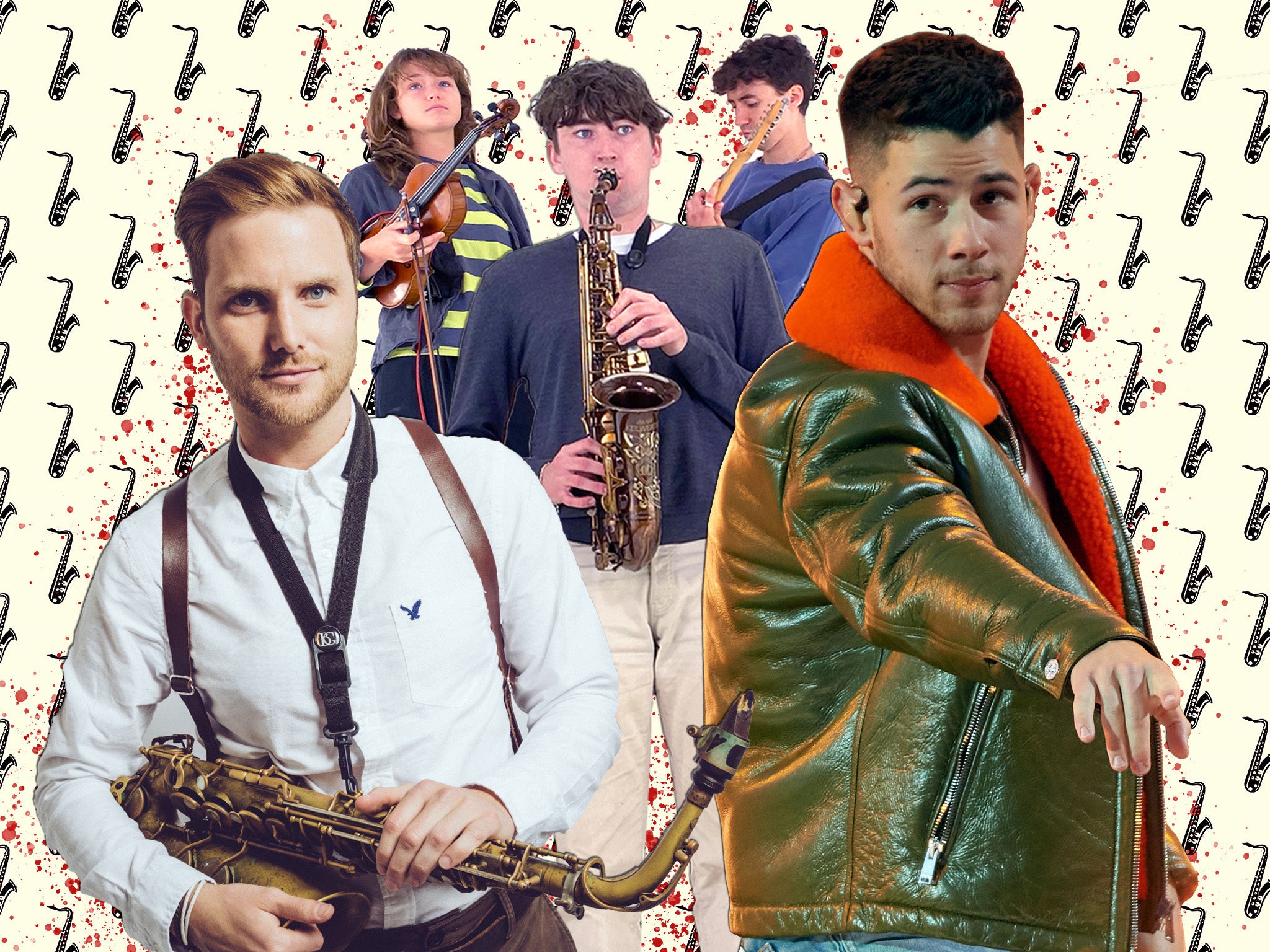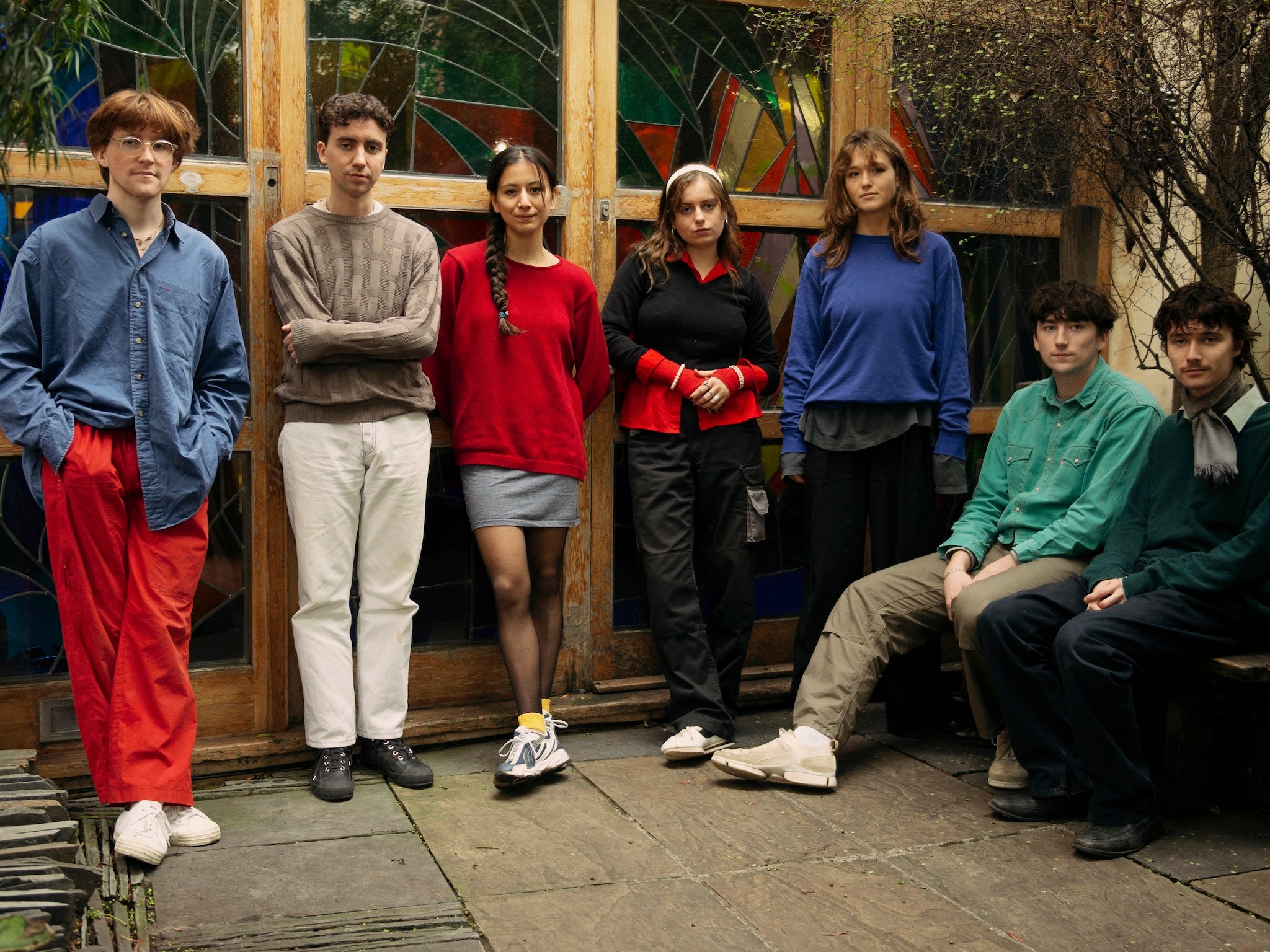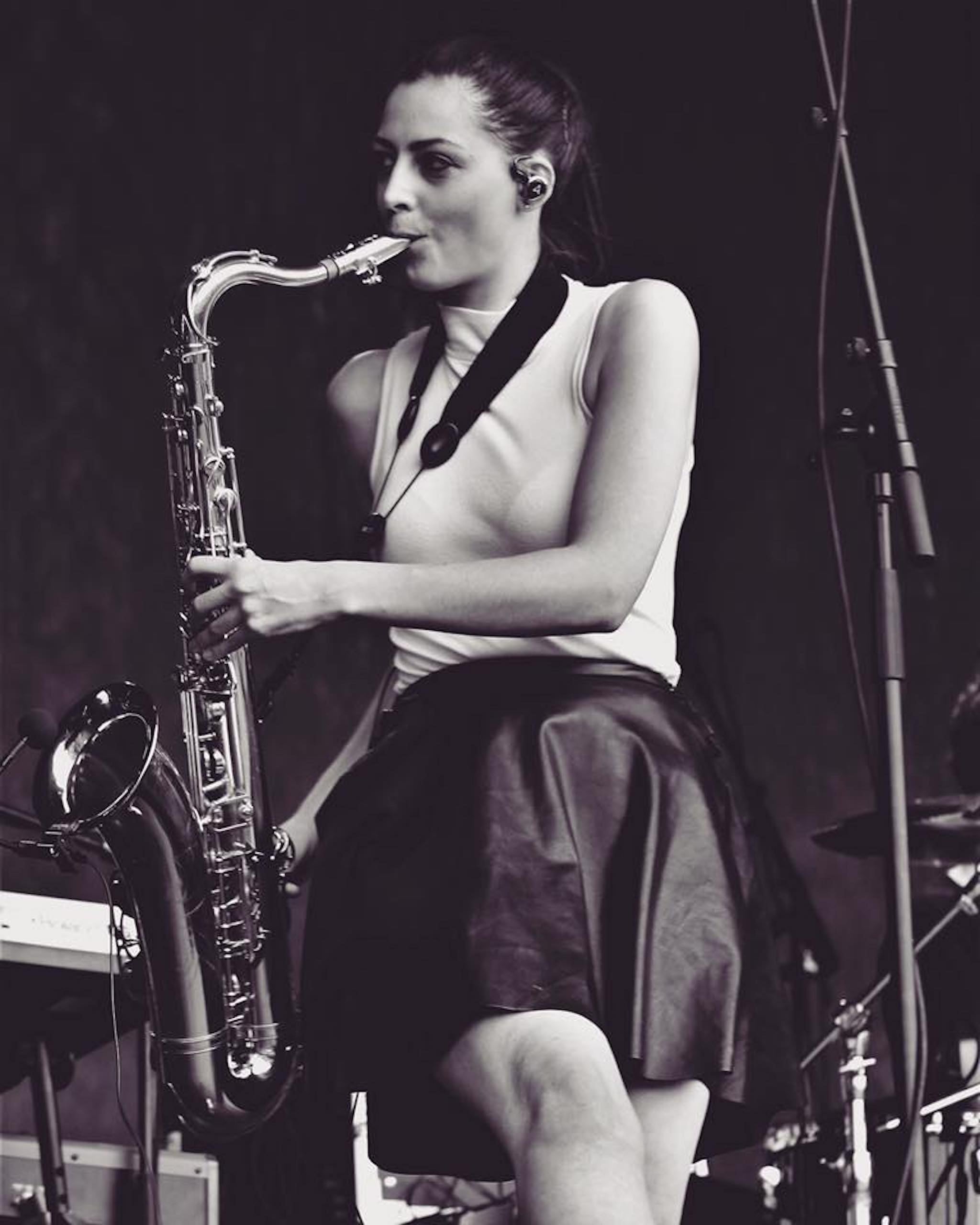Let’s talk about sax, baby: How one of music’s most maligned instruments reconquered pop and indie
As the saxophone finds its groove again, Ed Power talks to fans of the instrument – including Kat Deal, Brendan Mills and Black Country, New Road’s Lewis Evans

When experimental indie band Black Country, New Road play live, saxophonist Lewis Evans will often stand centre stage, filling the sanctified spot traditionally occupied by a lead singer. This is partly a matter of aesthetics. The London-based seven-piece savour the subversive flourish of putting the sax player out front, relegating their vocalist, Isaac Wood, to the fringes. But it is also a commentary on the group’s egalitarian music, in which the human voice and saxophone are equally parts of the warp and weft. “It takes away from the conventional rock band set-up,” Evans tells The Independent. “It’s quite refreshing to see a band that isn’t just two electric guitars, bass and drum.”
“Refreshing” is one way to describe the return of the sax. Historically, the instrument has been vilified as the cheese sprinkled on top of stodgy, middle-of-the road pop. Say “sax” and many people automatically flash to the never-ending solo on Gerry Rafferty’s “Baker Street”. It was rock’s answer to Alan Partridge – naff and oblivious to its own ridiculousness.
In recent years, however, the instrument has come storming back to relevance and credibility. And not just in the world of alternative music. Nick Jonas’s new album, Spaceman, is splashed in sax – the emotional crescendo on March’s “This Is Heaven” single furnished by a throaty solo. “This definitely has that Steve Winwood, Michael Bolton kind of feel,” Jonas told SiriusXM Hits 1. “It’s a good time.”
Then there’s North Shields blues-rocker Sam Fender, who went full Springsteen on his chart-topping debut Hypersonic Missiles by deploying Clarence Clemons-style fills at every opportunity. Bat For Lashes’ Eighties-influenced 2019 album Lost Girls used the instrument to evoke the end-of-summer poignancy of a John Hughes film. The 1975, whose earlier albums rode high in the charts thanks to their infectious, Eighties-indebted funk-pop grooves, included brass flourishes on songs such as “Love Me” and “This Must Be My Dream”.
“The Eighties are back sonically and the saxophone is part of that,” says London-based singer, producer – and sax ace – Kat Deal. “The Nick Jonas record is very Eighties. You can get away with using the saxophone that way. Horns in general have had a resurgence in the past five years.”
This rehabilitation has been a long time coming. Though an essential component of jazz and of contemporary music, in the pop mainstream brass has rarely been cool. From Raphael Ravenscroft’s “Baker Street” solo to Steve Gregory on George Michael’s “Careless Whisper”, the sax had come to be associated with a certain late-Seventies pomposity – music’s equivalent of the frosted-tip mullet. Yet those old prejudices are melting away. Musicians and audiences are now developing a deeper understanding of the instrument’s utility and its legacy.
The Latin boom has played a huge role in assisting a resurgence in the mainstream popularity of brass. Pioneers such as Augusto Coen in the 1930s were a major influence on the now ubiquitous presence of the saxophone in much of Puerto Rico’s contemporary pop. Ricky Martin celebrated this with his bombastic 1999 sensation, “Livin’ la Vida Loca” (widely regarded as the song that began the first Latin pop explosion). The track incorporated salsa elements that Puerto Rican musicians had helped popularise in the US decades before, and are still heard in the charts today.
In hip-hop, too, the saxophone makes a big statement. Kendrick Lamar’s 2015 masterpiece To Pimp a Butterfly introduced Los Angeles saxophonist Kamasi Washington to a new generation of fans. Washington’s interstellar playing style helped Lamar draw a connection between the Compton rap on which he was raised and his wish to pay tribute to jazz as an expression of African-American identity.
Black Country’s Lewis Evans suggests the streaming era has opened up genres such as jazz, salsa and the blues to people who otherwise might never have discovered it. “Spotify lets people down on a lot of things but there are couple of benefits,” he said. “For instance, people from anywhere could be listening to an old Ornette Coleman record. It is good for that. That is definitely a reason you are seeing more bands with saxophone.”

This freedom to rediscover the past has revealed a secret history of the saxophone, spotlighting figures such as James Chance. The experimental saxophonist was an important presence in New York’s 1970s no wave scene, performing with radical musicians such as Lydia Lunch. “People like Chance and Roxy Music are coming back into the conversation,” says Evans. “And perhaps getting more attention than they were in the past 20 years or so. Musician are thinking, ‘Oh, that sounds cool. Why don’t we emulate that?’. Bands are inspired to add the saxophone to their normal set up.”
The sax also has the ability to elicit instant happiness. Nothing lifts spirits quite like a saxophone in full flight. Consider the E-Street Band’s Clarence Clemons and the emotion-fuelled playing on Springsteen classics such as “Born To Run”, where the instrument grippingly conveys small-town yearning and the thrill of the open road. Or the louche giddiness of Peter Gabriel’s “Sledgehammer”, a track which owes its irresistibly stomping quality to Max Rivera’s saxophone blasts. And more recently there is the example of Mark Ronson’s “Uptown Funk”: four-and-a-half minutes of bottled exuberance powered by a triple-whammy of sax players, including former Sharon Jones and the Dap-Kings mainstay Ian Hendrickson-Smith.
“It’s the most fun instrument,” says producer and musician Brendan Mills, whose latest single, “We Can Have It All”, is a mood-enhancing collaboration with vocalist Tess Burrstone. “It has that sound which is instantly recognisable and sonically uplifting. It’s such a summery, feel-good, romantic instrument.”

The saxophone’s reputation for corniness belies its versatility, as Mills proves when he plays over uplifting house beats. That’s several universes removed from Evans and Black Country, New Road’s debut, For the First Time, where the saxophone brings an avant-garde, slightly ominous sensibility. There is, it turns out, a sax solo for every season. “I don’t play in a particularly ‘sax’ way,” say Evans. “When you have your own thing going on with the instrument it’s easier to take it more seriously.” He’s not playing “Kenny G type stuff” over the top, he points out. “Though if I did, that would be funny.”
For years, the curse of the saxophone has been that it was perceived as a novelty add-on, says Lewis. “‘Oh, check out this band, they’ve got a saxophone’. Which is fair, I guess. I do understand why it seems like this crazy thing. But it never seemed like a big deal for us to put a saxophone in the mix. It takes the music into a more ‘contemporary music’ realm. Which is really effective – it gives us that extra edge.”
With this spike in the instrument’s popularity comes an uptake in amateur musicians giving it a second chance, particularly during lockdown as they sought new ways to stay entertained. Jules Lawrence, assistant manager of Sax.co.uk, says lockdown has prompted a “huge upsurge” in people taking their dormant hobbies more seriously. “The last big upsurge I recall as a specific thing was a massive increase in the popularity of baritones shortly after Amy Winehouse released ‘Rehab’,” he says.

Saxophone players tend to have an intense relationship with their instrument. Often, they will talk about discovering sax the way people reminisce about meeting their future spouse for the first time or seeing a film that changed their life. “I was 18 and already a singer. I was in a vocal harmony group and we would sing along to a sax player,” says Kat Deal. “It was a tenor sax. The sound of it was so human. I found it very similar to the voice in a sense. I thought, ‘Oh, I want to play sax’. My parents wouldn’t buy me one. Starting off, I had to rent one.”
For Brendan Mills, the saxophone was a way of coping with his parents breaking up. “My mum and dad split when I was very, very young – five-years-old. When they were sorting things out, I had to go down to a holiday camp in Somerset. “There was this guy playing a saxophone on stage. I remember going ‘wow’. And he obviously picked up on it. He looked at me and said, ‘One day you’re going to play saxophone’. I went home to Mum and said ‘I’ve GOT to play saxophone’. It’s the only thing I’ve done since.”
The sheer fun of the saxophone goes beyond mere sonic considerations. When a saxophonist steps out, the crowd immediately perks up. “People love it,” says Kat Deal. “Every time I play sax people are like ‘ooh…’ You don’t get that with the trumpet or guitar. There is definitely a performative element you don’t have with other instruments. You can dance while playing saxophone. You can’t do that behind a keyboard or a drum kit.”
“The saxophone is so versatile,” adds Brendan Mills. “It lends itself to every genre – from jazz to Ibiza house. It’s a timeless instrument.”



Join our commenting forum
Join thought-provoking conversations, follow other Independent readers and see their replies
Comments